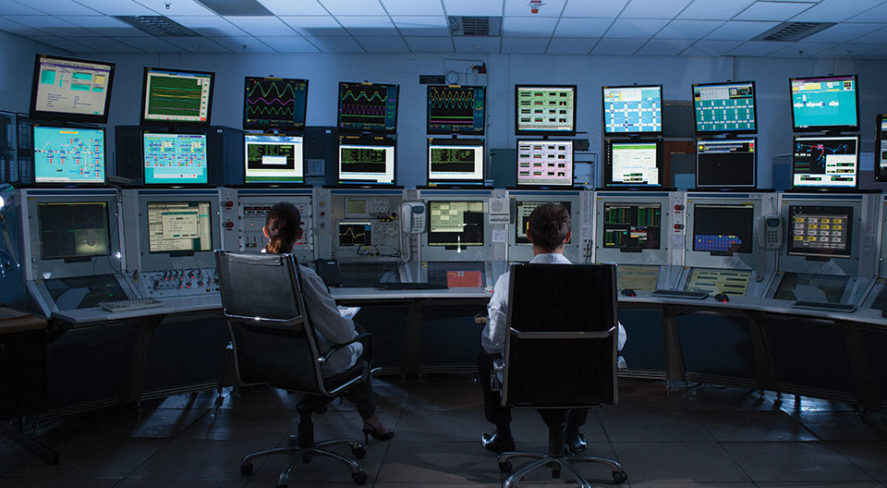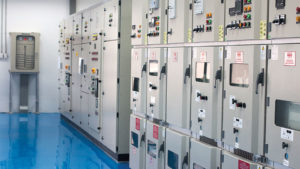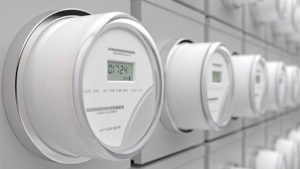Smart Power

The paradigm has shifted to intelligent networking solutions
In the past, power wasn’t smart. It was simply a static piece of hardware – still necessary but not connected or integrated with other physical security components and certainly unable to tap into analytics, predictive data or history reporting.
That’s no longer the case. Now, the paradigm of power has shifted from unintelligent device to network-connected component that yields rich data for the user and allows the security integrator to provide remote monitoring and managed power services – producing numerous residual benefits to installers and customers alike.
This transformation of power has coincided with the move of many products and solutions to the network and IP connectivity. Now, not only are surveillance, access control, audio and other devices IP-based, but power solutions have moved to the network, providing real-time information and intelligence on connected technologies across the enterprise and protected premises.
The movement of security devices to reside on networks gives rise to a host of capabilities and opportunities that not only enable these devices to work together to provide more effective security but also allows the monitoring and supervision of integrated solutions to ensure their continuing operation. Too often, the latter point is overlooked.
Increasingly, humans face an array of devices that help us monitor our own body performance – pulse, heart rhythm, skin temperature, light exposure and noise levels, for example. Of these and others, cardiovascular functions are arguably the most important. A network may be compared to the body’s nervous system; meanwhile, power bears closest resemblance to the circulatory system. Monitoring and managing the current flow through the system can lead to increased longevity and performance, as well as avoidance of unexpected surprises in the form of device failures.
 The base concept of power monitoring and management is not new. For decades, electrical utilities have deployed intelligent systems to maintain a continual flow of energy to their customers, constantly balancing energy supply with user demands and rerouting flows when problems arise. Over the past several years, this thought process has entered the conversation in the electronic security market, where random device failures or loss of power are unacceptable.
The base concept of power monitoring and management is not new. For decades, electrical utilities have deployed intelligent systems to maintain a continual flow of energy to their customers, constantly balancing energy supply with user demands and rerouting flows when problems arise. Over the past several years, this thought process has entered the conversation in the electronic security market, where random device failures or loss of power are unacceptable.
If the power supply can be compared to the heart and current to blood flow, monitoring and managing the health of both will contribute to the continued safe operation of physical security solutions.
The benefits of smart power management solutions to end users are clear. Predicting and gathering data on the health of systems provides a high return on investment (ROI) for the user, low overall total cost of ownership (TCO), reliable uptime and assured business continuity.
Smart power systems improve the security of equipment, protected assets and people. For the systems integrator, managed power provides the ability to provide a new suite of services to the customer that monitor, alert, manage and provide detailed reporting on systems solutions remotely.
History of Evolution
Power solutions have changed dramatically in performance and design. In the ‘70s, power systems used linear regulation, an older and inherently inefficient technology. Linear systems required a large, step-down transformer and would burn off extra voltage as heat – an enemy of electronics.
Linear power supplies continue to be phased out, in favor of offline switching supplies (OLS). OLS provides a cleaner output than linear, less noise and ripple, removing the need for a step-down transformer while improving efficiency, reducing weight and decreasing heat output.
When power supplies began to move to OLS, the higher efficiency offered a greater feature set and power solutions started their transition to smart, network-connected systems.
With smart power, a quick look at system health is possible at a moment’s notice and trouble conditions are reported in real time. With proactive power management systems and predictive analytics data from networked components, an end user can be informed, ahead of time, of impending lock failure or battery fatigue, offering the ability to replace components in a timely manner and maintain system operations. With continuous power system monitoring comes the opportunity for creating specific action alerts and reports for comprehensive system maintenance and management.
The Possibilities to Perform
Managed power can encompass several physical elements: the main power supply, power system outputs, supervised inputs and standby batteries. When it comes to power, there are different ways to accomplish managed monitoring and remote servicing. Managed monitoring can include: event reports, AC loss notification, service due reminders, overcurrent alert and low-battery warning. Remote servicing capabilities of power solutions can include: output supervision, battery load testing, remote power cycling and system health logs/trouble alerts.
The enhanced monitoring provided by managed power sends immediate notification of current or impending problems. Once notified, the monitored parameters allow basic troubleshooting remotely without sending a technician to the site.
 With continuous power monitoring also comes the opportunity to create real-time action alerts and reports for system maintenance and management. Alert formats may include email, XML, web-browser notification or Simple Network Management Protocol (SNMP). For example, a short circuit or integrated lock that is running “hot” and could present a fire hazard will instantaneously generate an email alert or SNMP “trap” to notify the integration company or end user of a potential problem.
With continuous power monitoring also comes the opportunity to create real-time action alerts and reports for system maintenance and management. Alert formats may include email, XML, web-browser notification or Simple Network Management Protocol (SNMP). For example, a short circuit or integrated lock that is running “hot” and could present a fire hazard will instantaneously generate an email alert or SNMP “trap” to notify the integration company or end user of a potential problem.
Moving the Industry to Fully Integrated Solutions
Network monitoring and management systems typically rely on SNMP. When a managed power system supports SNMP, it becomes eligible to be monitored, and possibly controlled, by a high-level system. This creates the opportunity for IT departments to have greater ownership in addressing selected problems affecting security. Through the development of security industry standards, such as with the Physical Security Interoperability Alliance (PSIA), which encourages “plug and play” interoperability, managed power systems can share the information and intelligence they generate with a wide range of other devices, services and systems.
Intelligent power systems with appropriately provisioned web browser interfaces provide the capability to not only predict but to implement actions in critical situations. Managed outputs may be individually activated or deactivated to shut down or recycle equipment through an embedded browser interface and then monitored for voltage and current values via the network or internet.
Other specific managed capabilities may include the following:
- Battery load tests can be scheduled or performed via network connection to check a site’s real backup capability against what’s required. Sites with underperforming battery backup are immediately flagged, so servicing can be performed in a rapid, efficient and proactive manner.
- Since impending failure of electric strikes and magnetic locks can be indicated by unusual changes in current draw, intelligent power systems, through tracking and reporting of power consumption, can often predict when and where a lock is starting to go bad.
- Ambient air temperature of the Intermediate Distribution Frame (IDF) security closet can be monitored and trigger an event notification for investigation if temperatures reach an unusual level.
- Security integrators can configure managed power systems to provide notifications for scheduled service or battery replacement.
In a managed power solution, there are many factors that contribute to a healthy ROI, focusing on the ability to be alerted to problems, remotely diagnosing those problems and maximizing system uptime without having to dispatch a service vehicle. Other factors to consider are the profitability loss to the business due to system downtime or malfunction, or having to hire security support personnel at the protected premises.
In addition, by monitoring current to a device and being alerted to system values moving to an unacceptable range, the chances of sudden catastrophic failure of security equipment may be minimized. Monitoring voltage, current and power draw of attached devices can help spot performance degradation and predict impending failure. Problems may relate to device temperature, fan performance, mechanical or component issues. Batteries attached to power supplies will degrade over time and become incapable of providing backup power for the required period of time. A system that can verify battery performance, optimize its charge profile and maintain its history helps ensure the battery will be there when needed.
Remote Monitoring
Remote monitoring of power solutions adds value to the integration firm and makes them more proficient in the field, and that translates to more money to the bottom line from direct time and labor savings. Managed power services can be added to the suite of services currently offered by the integration company.
Here’s how remote monitoring of power solutions works:
- You are notified by email, text or while online that one of the power solutions is running hot, the access control won’t engage, or the security solution might somehow be compromised should a real emergency occur.
- You can remotely, from anywhere, access the graphic user interface, assess the system health and even reboot or reset necessary components.
- If a site visit is required it can be scheduled immediately if necessary or conveniently the next business day.
- The proper parts and accessories can also be planned for, so ideally the work is completed during a single call.
 As the Internet of Things progresses, sophisticated electrical components will need to be up and running consistently. When there is a problem, the ability to remotely service connected components, such as power solutions, will become increasingly important. No longer will technicians have to trudge out to the field during regular and even off hours, because many problems can be solved over the Internet, thanks to smart, connected power solutions.
As the Internet of Things progresses, sophisticated electrical components will need to be up and running consistently. When there is a problem, the ability to remotely service connected components, such as power solutions, will become increasingly important. No longer will technicians have to trudge out to the field during regular and even off hours, because many problems can be solved over the Internet, thanks to smart, connected power solutions.
When there’s trouble with a networked solution, the systems integrator should be the first to know, not the customer upon failure. Intelligent, networked power solutions allow trouble alerts to be sent automatically and immediately, so the integrator is the hero and not the bad guy. Now you can detect problems before or as they occur, so the customer is assured that their system is operational 24/7 and especially in the event of a security breach or life safety event. Intelligent power system solutions will regularly assess power operation and the health of connected solutions and pick up failures immediately.
Other Valuable Benefits
Customers like metrics and data and connected power solutions allow systems integrators to generate detailed reports on the operating status of devices. These health reports can be produced on demand, daily, weekly, monthly or scheduled at intervals the customer desires. Reports can be saved for yearly status updates or other accountability purposes, such as in meeting compliance or regulation requirements. Reporting can provide valuable insights into device or system history and available on demand or as defined periodically. Maintaining a site’s operational history with data logging of 1,000 events is possible with managed power systems now providing more than a year’s history.
For systems integrators, there’s no ongoing profitability from static hardware they simply install and leave behind. Intelligent power solutions bring a new value proposition in the way of monthly recurring revenue from managed services and keen situational awareness to the customer’s facility and their networked power solutions. It’s the future of connectivity, here today.
Smart power is a tangible asset that security companies can offer to their customers to expand their business. When cost savings are properly related to the end user and the ROI is calculated, it provides an even stronger value proposition that ultimately lets the installing company make more money and provide additional services that are useful – and make the customer stickier.
In industries where security and reliability truly matter, power is the most critical platform of any system. Power has a new look and technological design for mission critical and security industry systems responsible for saving lives and property. Now, it can detect, report, assess and help respond before potential negative consequences occur.
John Olliver (jolliver@lifesafetypower.com) is senior vice president of sales and business development at LifeSafety Power Inc.
